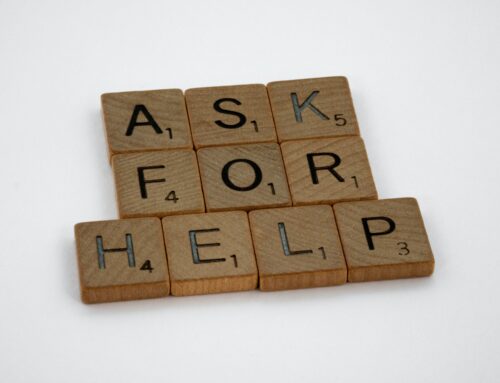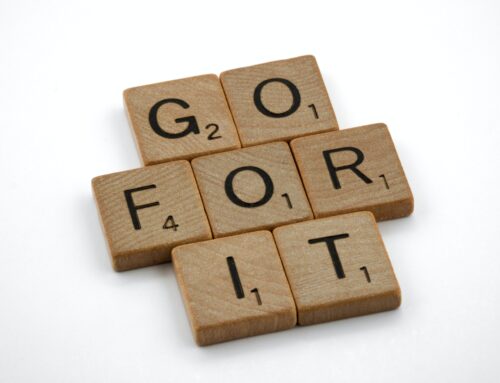When I go hiking, I always like to be prepared with the “10 Essentials”. Basically, essential items for navigation, protection, illumination, first-aid, sustenance, and repair to ensure survival outdoors. Being prepared with safety and survival tools has served me well, whether packing the car, a day-hike pack, or a wilderness backpack. This got me thinking about survival tools for managing emotions. What would the “10 Essentials” be? When you’re highly emotional, what items would help you navigate safely through the feelings, protect yourself and others, gain insight, sustain yourself, apply first-aid to the emotional wound, repair and move forward?
[Tweet “Got hurt #feelings? Apply these 10 Essentials for #Emotional #FirstAid at https://gabardi.com/blog/”]
I created the 10 Essentials: Tools for Emotional First Aid (TM) sheet to help. In this article, I’ll offer examples for each of the 10 Essential tools to soothe “hurt” feelings or emotional “injuries.”
- PAUSE You must slow down so that you can disrupt the immediate “threat response” reaction of your mid-brain. You usually need at least 20 – 30 seconds of pause time to disrupt the “fight-flight-freeze” reaction. Get into the present moment and give yourself a moment to calm yourself and think.
- BREATHE Breathing is a great way to pause and slow down your body. Breathing slowly and deeply sends signals to your body that you are safe. Take at least 10 slow, deep breaths.
- BODY Continue efforts to calm your body. Scan your body for sensations that reflect your feelings and tension. Breathe through the area of your body holding tension. Consider tensing those muscles and then releasing the muscles, noticing the tension flowing out of your body. Another soothing option for your body is focusing on your senses. This is a great way to calm down and be in the moment with what you see, hear, taste, touch, and smell.
- COMFORT Offer yourself comfort with a variety of soothing activities. Consider music, getting out in nature, or looking at beautiful, peaceful images. Consider splashing your face with water, a warm or cool healthy drink, or a shower or bath. Moving your body with dance or enjoyable exercise, wrapping yourself in a soft blanket are other options. Putting your hand or hands over your heart and slowly breathing can also be quite comforting. Try a variety of options to find what is most comforting for you.
- CONNECT Seeking support from others is an important way to help us calm down. Others help us soothe, not feel alone, and can offer tangible advice and assistance. Giving and receiving support produces oxytocin, the bonding hormone. This hormone also down-regulates the stress hormone cortisol. Talking with supportive family or friends or receiving hugs can be soothing. Cuddling with a furry pet works too! Also consider support from professionals and engagement in your community, by either finding helpful resources or offer help to others as ways to soothe your emotions and feel supported.
- COMPASSION Be kind to yourself and understanding of your feelings. Recognize and honor your troubling feelings as being human. Connect with your common humanity; that we all struggle and feel pain. Realize that you are not alone in your pain or struggles; others have felt similar feelings. This may help you fight your feelings less, accept them more, which may help you feel them, let them pass, and be able to think more clearly.
- AWARENESS Without judgment, increased awareness of what you are experiencing can help you have insight about yourself and others, in order to more accurately assess the situation and find realistic, helpful solutions. Awareness of your feelings, what triggered the feelings, your perceptions about the situation, what contributed to your perceptions, your thoughts, values, goals all of these things have an impact on how you handle your feelings, the situation, and consideration of your options. The less you are aware of these things, the more limited your options are for managing what is causing you emotional discomfort.
- ACCEPTANCE Of yourself, your feelings, and the situation that you are in. Acceptance does not mean that you have to like your circumstance; it does mean that you accept that life isn’t fair and that some things and other people are not within your control. Acceptance of what is outside of your control frees you to focus on what is within your control. Your attitude and your responses are within your control.
- THINKING Your thoughts can have a big impact on how you feel. Some thoughts can help you calm down while other thoughts can make you feel worse. Some thoughts are more accurate and reflect the reality of the situation, other thoughts are more distorted. Generally speaking, the stronger your emotions, the more distorted your thoughts. Reviewing negative events or interactions over and over in your mind magnifies the original feelings associated with the event and makes it seem bigger and worse. Resist all or nothing, extreme thinking. Separate facts from “fictions” or your opinions and beliefs. The more flexible your thinking, the more open you can be to options and solutions. The more you shift from focusing on negative thoughts, to realistic, positive thoughts, the better you will feel. Focus on gratitude and on your strengths. Consider your current situation as a challenge you are capable of facing rather than a “life threat.” Remember, your attitude is within your control!
- PLAN & PROBLEM SOLVE As you calm down and are less emotionally reactive, you can consider options for responding. What is your goal? What is within your control? What options do you have for your next step? What are the potential outcomes of your options? Prioritize and consider effective options for responding to people and situations that are consistent with your values and ultimate goals. Will your action produce the response you hope to get? When you pause, calm down, and become aware, you have time and perspective to think things through and make a careful choice rather than impulsively react.
These ten tools can be thought of as the process of Regulate, Relate, and Respond. Regulate your body’s fight-flight-freeze reactivity and the emotional brain. Relate to others as an effective means of soothing yourself, getting support, and managing stress. Respond with accurate, flexible, and positive thinking, and choose an option that fits your values and goals. Repeating this process consistently builds Resilience. Having strategies that effectively manage emotions can enhance your sense of competence and empowerment. Practicing these skills give you increased mental control and expanded choices for responding to life challenges.
If you would like your own copy of the 10 Essentials: Tools for Emotional First Aid (TM) sheet, go to free-pamphlets, where you can click on the 10 Essentials tip sheet or the 10 Essentials pocket card to download the pdf. The pocket card is wallet sized and perfect to laminate and keep in your wallet as a reminder. While you’re on the Free Pamphlets page, sign up for my newsletter! Once you’re signed up, you will receive my Quick Guide to Managing Your Emotions. This guide will offer more information on the role of your brain in emotion management and helpful tips that complement the 10 Essentials tip sheet. You will also receive periodic news in your in-box for your well-being, resilience, and healthy relationships!





